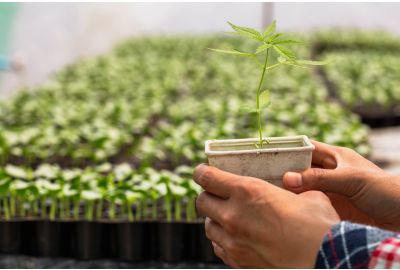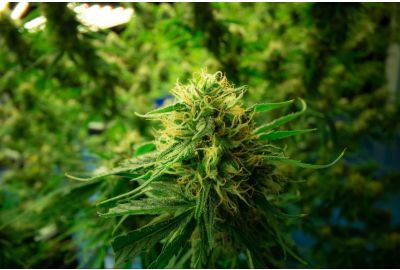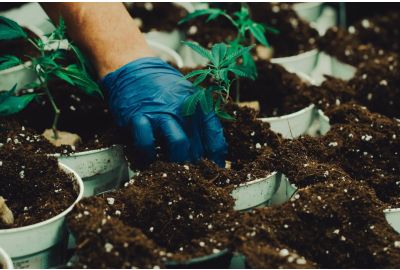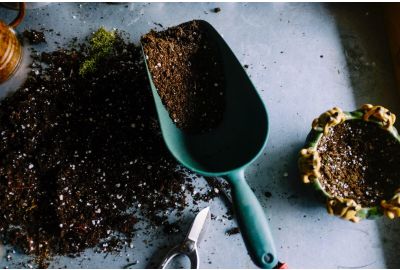Best Soil for Outdoor Weed
You've got your seeds ready and feel excited about growing your first cannabis crop. What seemed like an easy task has turned into confusion, and a lot of questions pop up. What is the best soil for outdoor weed growing? Which nutrients work best? How do you maintain the ground?
Preparing the dirt the right way makes a massive difference to the quality and size of your weed. Not every plant is the same, and cannabis has specific requirements regarding the texture and type of earth.
You'll need to develop the perfect outdoor cannabis soil mix for big, beautiful buds to flourish.
We understand that you might need some guidance to get things right the first time. We know you're picturing yourself lighting up that first fat joint and don't want you to be disappointed.
We're here to help! Read on to learn everything you need to grow top-quality plants using the best soil for outdoor cannabis.
Starting to Grow Weed Outdoors Using Soil
There are many benefits to growing weed outside, including:
- Lower costs
- Big yields
- Environmentally friendly
- Fun and relaxing
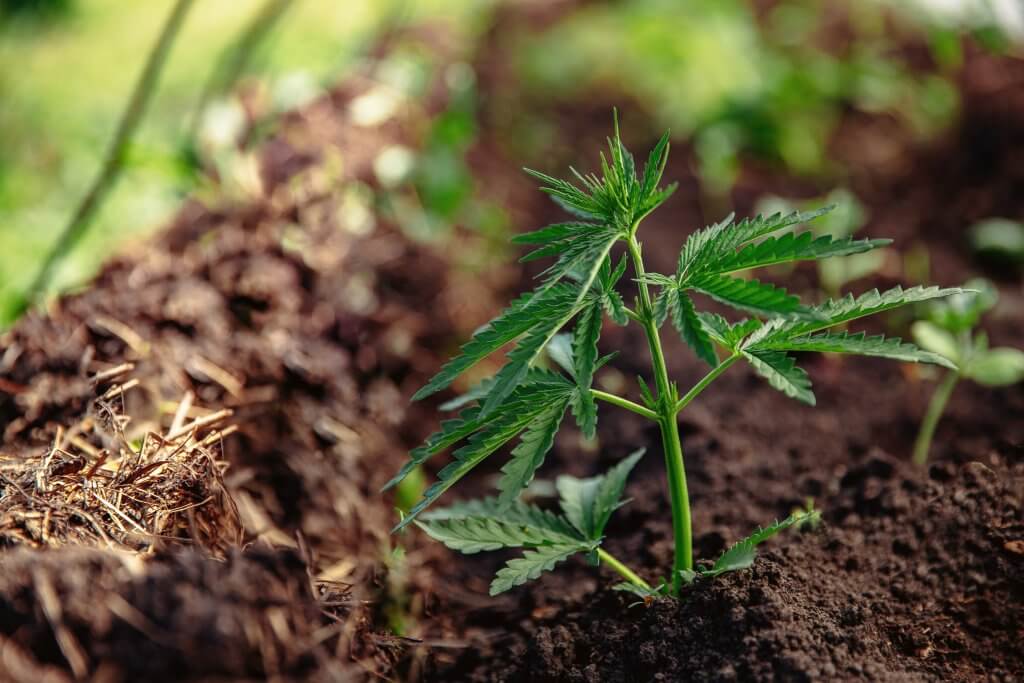
Choosing the best soil to grow cannabis outdoors means you'll need to stay on top of monitoring the acidity, texture, and pathogens (pests in the ground).
If you opt to make your own soil or purchase sterile earth, you'll have complete control over the acidity, nutrition, and texture.
You need to be aware that planting weed in the ground gives your plants exposure to all the living organisms in the dirt, which is more challenging to create in a pot.
The container you grow your marijuana in is fundamental to the life cycle and harvest of your plant.
Wherever you decide to plant your weed, a well-prepared outdoor cannabis soil mix is crucial to mitigate any issues throughout the different growth stages. As long as you nourish the earth properly, your plant will thrive, and you won't need to intervene.
Ultimately, excellent soil is the gateway to a healthy plant, which means an optimum harvest for you to enjoy to the fullest.
Soil Texture and Composition
The best soil for growing cannabis outdoors is light, loamy, and drains well but retains enough moisture. Loamy means a mixture of sand, silt, and clay with a ratio of around 40:40:20. The following make up the composition:
Cannabis plants need a specific type of soil to grow and flourish. You cannot just use whatever substrate you find. Even the standard garden soil sold in local stores will not suffice.
Ideally, the chosen mix should feature an optimal blend of light and heavy materials. This facilitates adequate water and oxygen intake. On top of that, it should contain a host of organic matter, making it hospitable to the microbial populations.
Soil can be broken down into four core components.
- 45% minerals (sand, silt, and clay)
- 25% water
- 25% air
- 5% organic matter
Sand
Sand is light, coarse-grained, and fast-draining. It primarily contains tiny fragments of rocks and hard minerals, such as granite, quartz, and limestone. The high porosity helps enhance the drainage and aeration of the mix. On the flip side, sand has poor moisture retention and little to no nutrient content.
Note: It is called "sandy soil" if it contains at least 85 percent sand and up to 10 percent clay.
Silt
Silt feels powdery when dry but slippery and mud-like when wet. It mainly consists of loose sedimentary material and rock particles that are much smaller than a grain of sand. It is not well-draining but has fantastic water retention properties. More than that, silt is also rich in nutrients and other essential minerals.
Note: It is called "silt soil" if it contains 80% or more silt and less than 12 percent clay.
Clay
Of the three types, clay has the smallest particles. Each grain is tightly-packed, leaving barely any airspace in between. The result is a heavy material that could store water and nutrients well. It is also highly fertile and contains a range of essential minerals. At the same time, though, being compact also makes it hard for moisture and air to pass through it. If there is too much clay, for example, the soil mix will not drain properly and may even turn concrete-like when saturated.
Note: It is called "clay soil" if it contains over 25 percent clay.
Water
Water comprises about 25% to 30% of soil. It is not just plain water, however. Instead, it is referred to as 'soil solution' - water containing dissolved gases, salts, minerals, and organic matter. More importantly, it holds ions - the form of nutrients that the roots can absorb.
Air
Just like water, nearly 25% to 30% of soil exists in a gaseous state. These gases fill the pore spaces in the soil. Note that soil naturally contains high amounts of carbon dioxide - but low levels of oxygen. That is why it is important to boost aeration in the root zone. Remember, plants need oxygen to convert sugars into usable energy - a process known as respiration.
Organic Matter
Soil is made up of about 5% organic matter or carbon-based compounds. That refers to any living material - including plant and animal debris - at various stages of decay. Although the organic content is relatively small, it still plays a critical role in the quality and quantity of the yields.
The millions of microorganisms in the soil - such as bacteria, fungi, protozoa, arthropods, and nematodes - are responsible for breaking down the once-living biomass. In other words, organic matter serves as the food source of these microbes. Along the way, it produces and synthesizes nutrients, making them more available to the roots. At the end of the decomposition process, what you get is humus - a dark, spongy material teeming with nutrients.
The main benefit of organic matter is that it enhances soil tilth - the soil's physical condition, especially its ability to support plant growth. In particular, it boosts aeration, water absorption and retention, and drainage, among others. It also serves as a nutrient reservoir.
What exactly is loam, and what is so special about it?
Technically speaking, loam refers to soil containing less than 52% sand, 28% to 50% silt, and 7% to 27% clay. For gardening purposes, the most popular sand-silt-clay ratio is 40:40:20. The proportions, though, may vary, resulting in different soil subtypes.
| Types of Loam Soils | Mineral Composition |
| Sandy loam | Sand: 43-85% Silt: 0-50% Clay: 0-20% |
| Silt loam | Sand: 0-50% Silt: 50-88% Clay: 0-27% |
| Clay loam | Sand: 20-45% Silt: 15-53% Clay: 27-40% |
| Sandy clay loam | Sand: 45-80% Silt: 0-28% Clay: 20-35% |
| Silty clay loam | Sand: 0-20% Silt: 40-73% Clay: 27-40% |
The unique mineral composition of loam soil significantly impacts its texture, drainage, and water retention - in a good way.
Texture
As a combination of sand, silt, and clay, loam soil contains multi-sized particles. If you run your hands through the material, it should feel dry, soft, and friable. More importantly, it should maintain this consistency when dry and wet, making it easy to handle and work.
When compressed into a loose ball, loam should retain its shape for a moment before breaking up into chunks. That is a sign that it has an optimal texture - neither too compact nor too loose. Having enough airspace in the soil is critical as it allows the roots to grow through it. At the same time, it also boosts oxygenation while promoting drainage.
Drainage Ability
Having sufficient drainage helps prevent overwatering, which could drown and suffocate the roots. And without enough oxygen, the roots will starve and begin to decay. Eventually, this leads to nutrient deficiencies.
Loam soil has enough sand to make it well-draining. That is because the gap between the particles allows water to percolate through it. After watering, the pool on top of the medium should drain within a few seconds. Neither should it take too long to trickle out of the bottom holes.
Water Retention Capacity
The main concern with sandy soil is that it is fast-draining. It runs the risk of drying out, but it could also flush the essential minerals. That means that the plants may not have the moisture and nutrients they need to grow and prosper. If left unaddressed, this could stunt growth and cause other damage, compromising the yields.
Loam soil does not have drainage issues due to the addition of silt and clay - both of which are water-retentive and can negate the high drainage capacity of sand. Ideally, it should absorb and hold onto moisture without getting too muddy.
The Ideal Soil Amendments
Loam soil - regardless of the type - is by no means perfect. Depending on your needs, preferences, or situation, you might find it lacking in some aspects. Or, maybe you did not achieve the optimal sand-silt-clay concentration. At any rate, you will most likely want to improve its physical, biological, and chemical makeup.
Soil amendments - which include both organic and inorganic materials - could help you achieve precisely that. Ultimately, they help maximize plant growth and productivity.
Organic amendments come from materials that were once alive. These include compost, earthworm castings, and animal manure. They increase the organic matter content in the soil, dramatically improving tilth in the long run. Most of these materials have nutritional value, which is why they double as organic fertilizers.
Inorganic amendments, on the other hand, are usually mined minerals, such as perlite, vermiculite, pumice, and limestone. Generally, they improve the structure of the soil, particularly aeration, drainage, and water retention. Others help stabilize the pH or even add minerals.
Here are some of the most popular soil amendments and their specific purpose:
| Primary Functions | Soil Amendments |
| Improve Texture | Gypsum Coco coir Biochar Perlite Vermiculite Pumice Compost Earthworm castings |
| Boost Drainage Ability | Gypsum Coco coir Biochar Perlite Pumice Compost Earthworm castings |
| Increase Water Retention Capacity | Coco coir Biochar Vermiculite Pumice Compost Earthworm castings |
| Add Organic Matter | Biochar Compost Earthworm castings Chicken manure Blood meal Bone meal Bat guano Crustacean meal Fish emulsion Kelp meal Alfalfa meal Mycorrhizal inoculants Humic acid and fulvic acid |
| Adjust or Stabilize the pH Level | Biochar Garden lime Compost Bat guano Blood meal Humic acid |
Note: You have the option of starting with loam soil and amending it with the preferred ingredients. Alternatively, you can also buy organic potting soil from trusted brands. If the product contains any of the above amendments, you can expect that it has a decent texture and composition. Despite having nutrient-rich materials, though, you would still need to use separate nutrients across the different growth stages.
Planting in Pots or in the Ground
Once you've got your soil mix for cannabis outdoors ready, you'll need to determine where you're going to plant your weed. There are two primary options, pots or in the ground. Both methods have their benefits, so it's up to you to decide which works best.
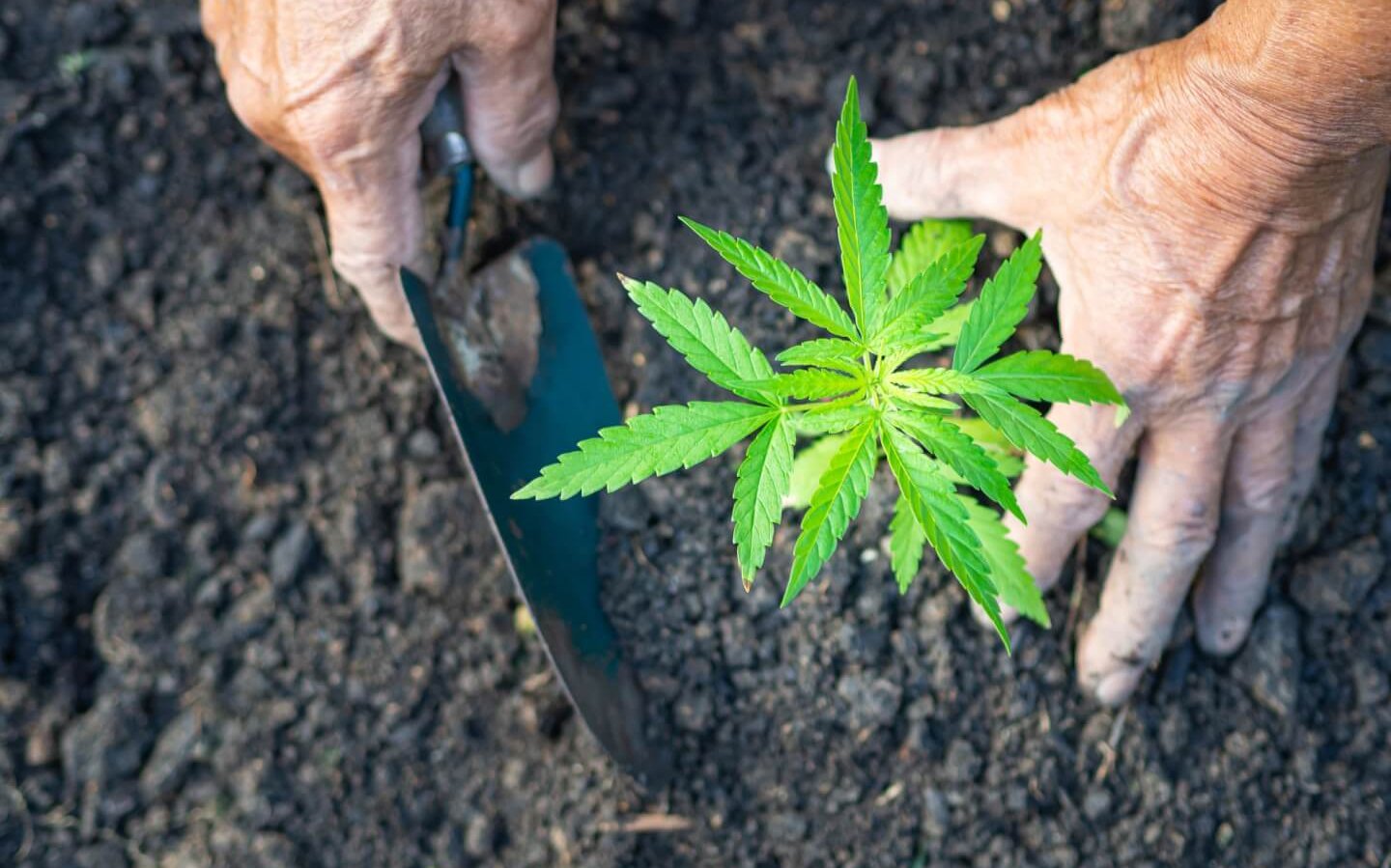
If you opt for pots, you have the advantage of using commercial soil, which, luckily for you, tends to be optimized for growing cannabis and is pre-sterilized. This earth keeps harmful microbes away and your plants well-nourished.
There's a downside, though. Your plants will be constricted within the container and may also require transplants and lots of watering.
If you want to go all-natural, your plant's roots can spread out and access the maximum amount of groundwater. Your cannabis will grow bigger and require far less maintenance, but there's always the risk of exposure to pathogens in the soil and contamination.
The seasoned weed growers may make it seem near impossible to create the best soil for cannabis outdoors, but fear not! Marijuana will grow almost anywhere, even on riverbanks.
Make sure to watch your plants as they grow and adjust the soil when needed. Producing cannabis is a learning curve that you need time and patience for. The best way to learn is on the job.
Best Soil for Growing Weed Outdoors
We're sure you've heard the phrase, 'you are what you eat.' The same applies to your cannabis seeds and plants, which is why quality soil is essential. The better the earth, the better your final harvest will be, and the more you'll enjoy it.
What is the best soil for outdoor weed growing? It depends on where you plant your cannabis.
Best Soil for Growing Weed in Pots
When planting your seeds in pots, you have complete control over what goes into the mix. You can buy a commercial branded soil that's all ready to pop your seeds into, or you can opt for some homemade compost.
For first-time cannabis gardeners, investing in quality potting soil is the best idea. Marijuana outdoors grows with watering alone if you use the 'super soil' correctly without having to add any minerals or nutrients.
You can make this earth yourself with a combination of worm castings, bat guano, and other components. Let it sit for a few weeks with some quality soil, and it'll be good to go. We recommend adding a few stones to help with drainage.
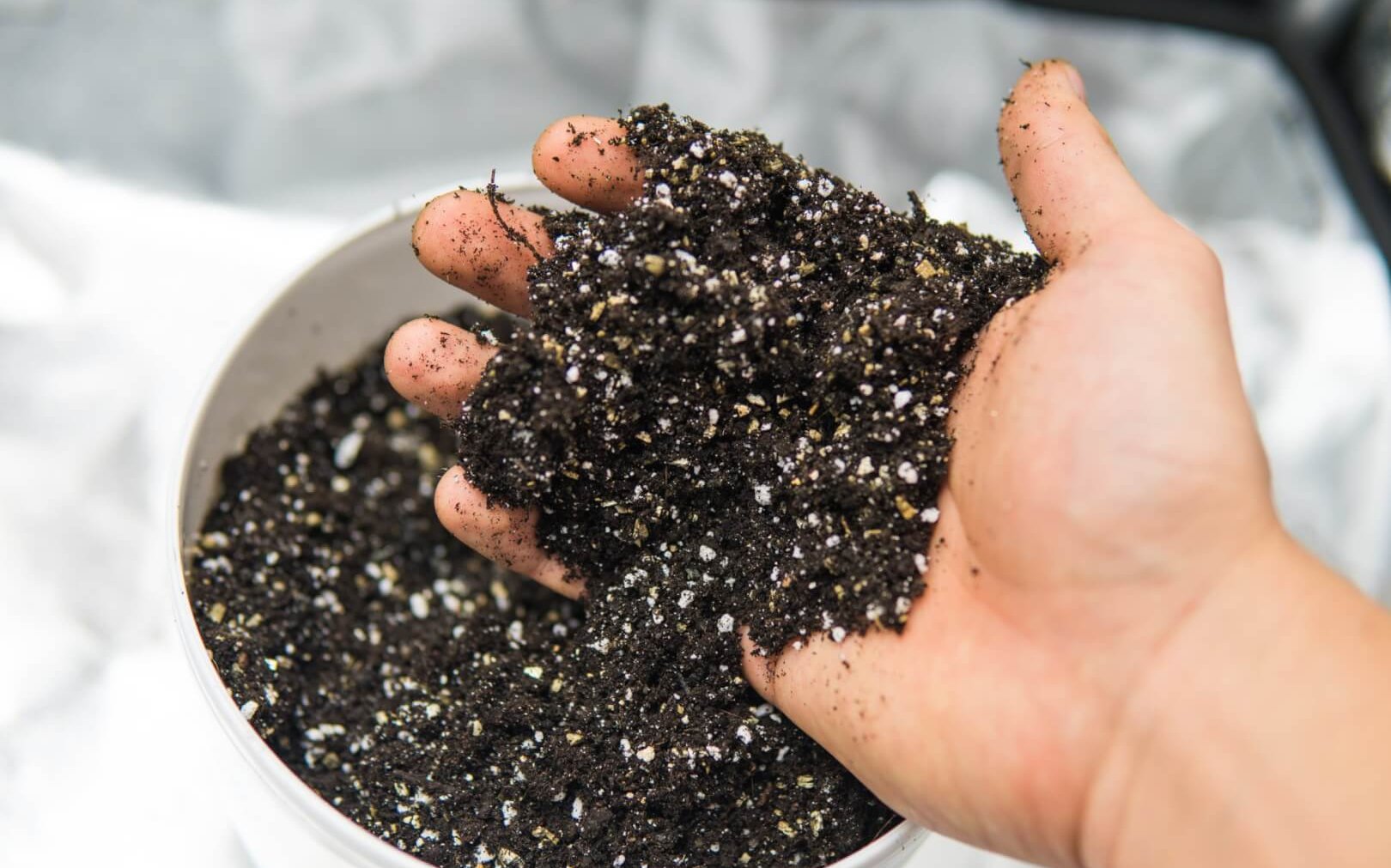
Best Soil for Planting Weed Seeds in the Ground
The best soil for weed outdoors when planting in the ground is loam, which we mentioned is a mix of sand, silt, and clay.
Test your soil with the glass jar method to check the ratio of each element and amend accordingly. You'll also need to consider certain factors, including:
- pH level
- Water retention
- Texture
- Nutrient makeup
- Drainage
A clay-heavy soil will drain slowly and won't hold oxygen well. Dig large holes at least a month before you plant and mix in plenty of compost, worm castings, manure, and other organic matter. This technique allows for aeration, drainage, and lots of nutrients.
Sandy soil is easy to manipulate and drains nicely, but it doesn't hold nutrients well. You'll need to dig holes and add compost and peat moss to bind everything together.
Silty soil is ideal because it's simple to work, holds moisture, drains well, and has lots of nutrients. This dirt is also very fertile and will welcome your seeds well.
Ideally, your outdoor soil mix for cannabis should be a blend of them all. You can add in store-bought earth with added nutrients to help maintain your plants healthy until harvest. Ensure you add fertilizer and sterilize the dirt if you don't use a commercial brand.
The Best Nutrients for Outdoor Soil Growing
For your seeds to grow to their full potential, your earth will need three essential nutrients. The best soil to grow cannabis outdoors should include the following in the fertilizer.
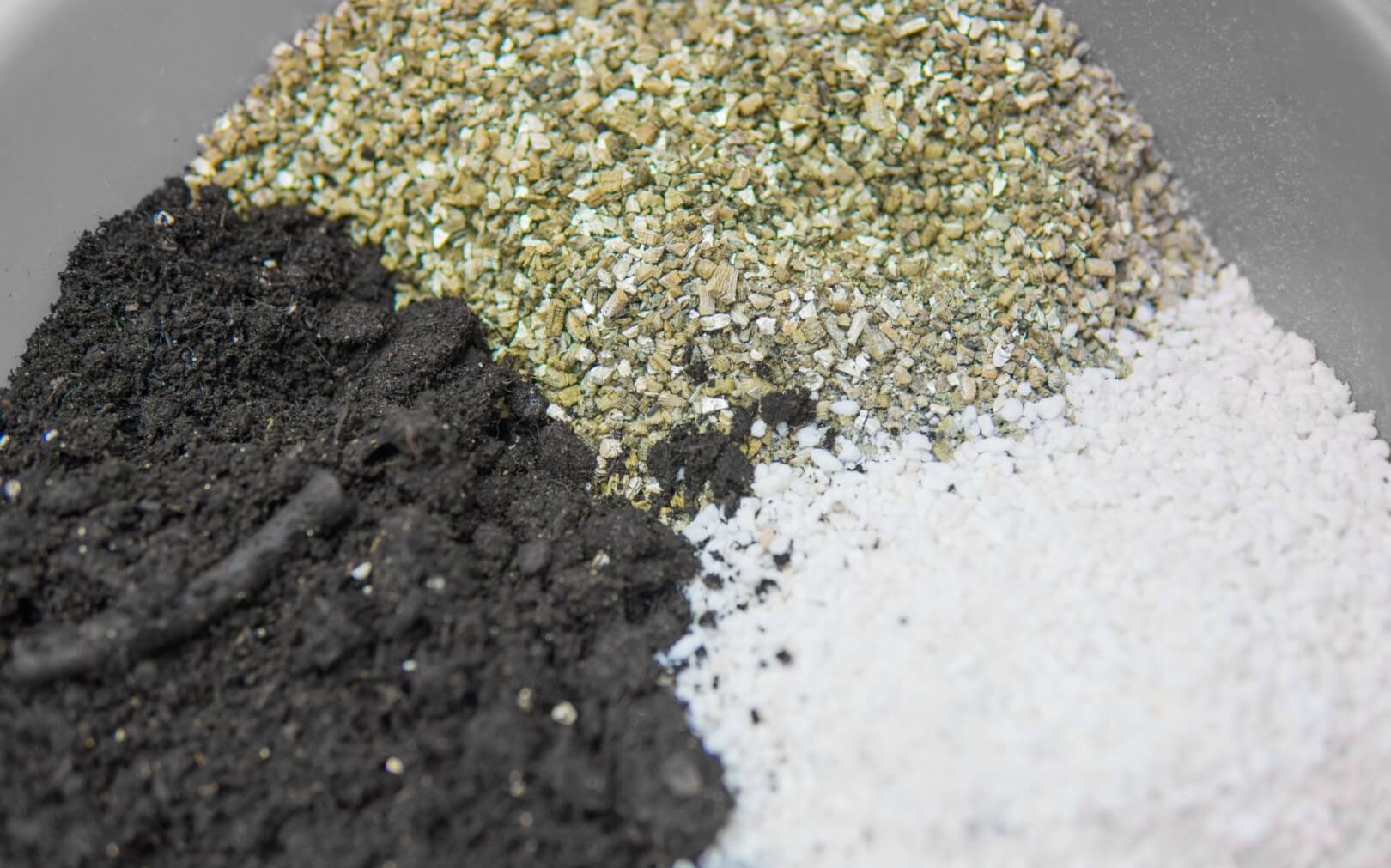
Nitrogen
This nutrient is the most essential for your plant's growth, food processing, and chlorophyll creation. You'll notice a lack of nitrogen if your cannabis starts turning yellow and stops growing taller.
Potassium
When your soil doesn't contain potassium, leaves will turn light green to yellow. The nutrient aids proper growth and helps with the reproduction of your plant. Potassium also affects the shape, size, color, and taste of your weed.
Phosphorus
Playing a vital role for seedlings and young plants, phosphorus helps cell division, promotes root growth, and aids the development of the growing tip.
How to Get the Best Soil Mix for Cannabis Outdoors
As mentioned earlier, you can buy a soil mix or make your own. Here are a few things to consider and look out for in either situation.
Buying Pre-Made Soil Mixes
If you decide to buy the best soil for outdoor weed from your local garden store, you'll come across a variety of amendments, such as:
- Bat guano
- Peat moss
- Perlite
- Plant food
- Worm castings
- Bone meal
- Biochar
- Compost
- Fish meal
- Glacier rock dust
If the brand amends the soil heavily, there'll be a huge list. Others create great structured soil with basic nutrients, leaving gaps to fill yourself.
When looking for something that'll help you throughout your plant's life, opt for dirt that offers the correct pH level, balanced nutrients, and a loamy texture. This way, you won't need to do a lot, if anything, yourself.
If you like the idea of creating your soil mix but would like a little help, purchase a customizable option. With these bags, you can add your topsoil and liquid nutrients when you want, depending on your weed's needs.
Creating Your Own Outdoor Cannabis Soil Mix
Perhaps you decide to create your mix, so you'll need to do a bit more work to keep your seeds happy. To make the best soil for growing weed outdoors, you'll need to assess your current dirt first.
Once you're satisfied, you'll need to look for a quality fertilizer to provide your plant with the three essential nutrients. The less nourishment your weed gets, the fewer buds it'll produce.
These nutrients need to be present throughout each growth stage, which means a lot of maintenance on your part.
Keep in mind that shop-bought soils come already sterilized, which kills harmful bacteria, fungi, and insects. For your seeds to flourish, thorough sterilization is a must.
The process takes a lot of time and effort, though, and there are other ways to control your pests by introducing beneficial microbes and insects into the soil.
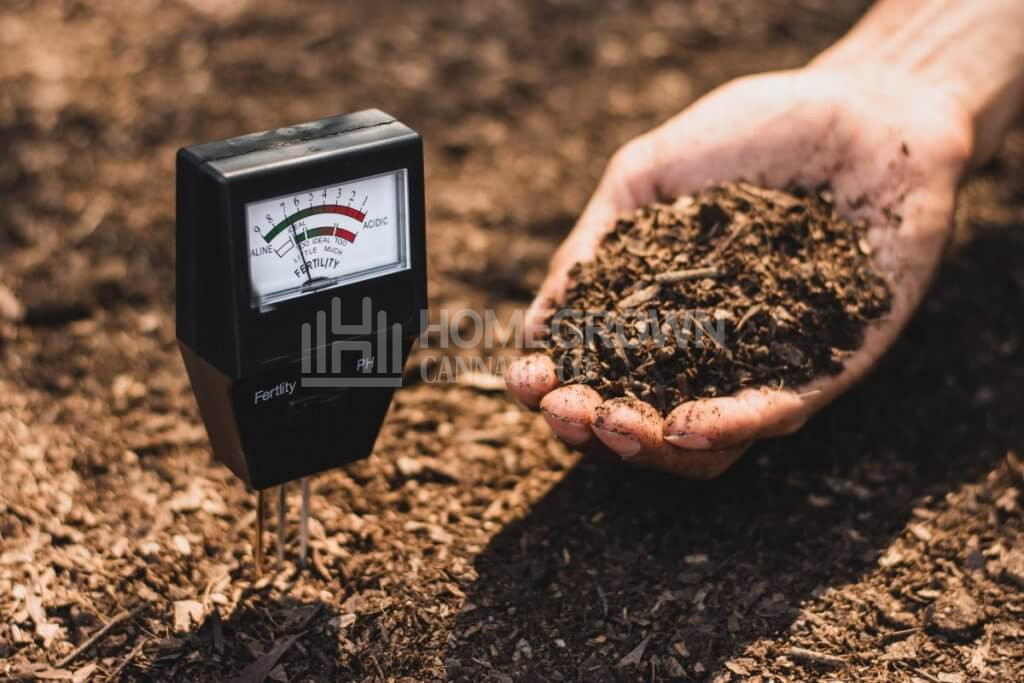
How to Feed and Maintain the Best Soil for Outdoor Weed
Once you've started growing marijuana outdoors, you need to know how to feed and maintain your beloved plant. Neglecting your cannabis at any stage will result in poor quality weed or, even worse, losing your entire harvest.
Throughout your marijuana's lifecycle, you'll have to ensure it gets enough nutrients. You can buy ready-made mixes in a store or create your fertilizer. If you want to make organic food for your cannabis, we recommend these:
- Blood meal or fish meal for nitrogen
- Bone meal or bat guano for phosphorus
- Wood ash or kelp meal for potassium
- Dolomite lime for calcium and magnesium
- Epsom salts for magnesium and sulfur
We advise against nutrients designed for indoor growth as they tend to contain synthetic mineral salts, which are damaging to bacteria in the earth.
If you're not sure how much fertilizer to use, it's best to be conservative. You can always add topsoil if you notice deficiencies in your plants. There's such a thing as too many nutrients, which could cause a nutrient lockout and ruin your crops.
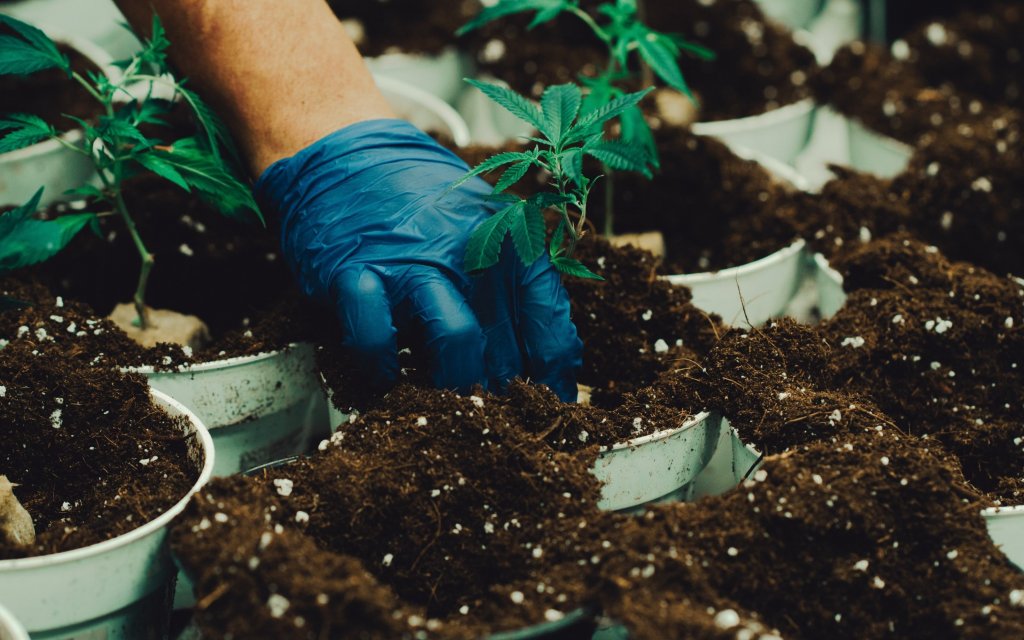
Growing Weed Outdoors in Soil is the Most Natural Way!
By now, you should know enough to prepare the best soil for growing weed outdoors to plant your seeds for optimum growth successfully. Cultivating weed is an enjoyable pastime and highly rewarding when you finally sit down to light up and try your cannabis.
Remember, whether planting in pots or the ground, buying ready-made soil, or mixing your own, have fun and spend lots of time with your cannabis.
Once you're ready to get started, shop for seeds and begin your marijuana gardening journey. Don't forget to share stories and let us know how you get on!
